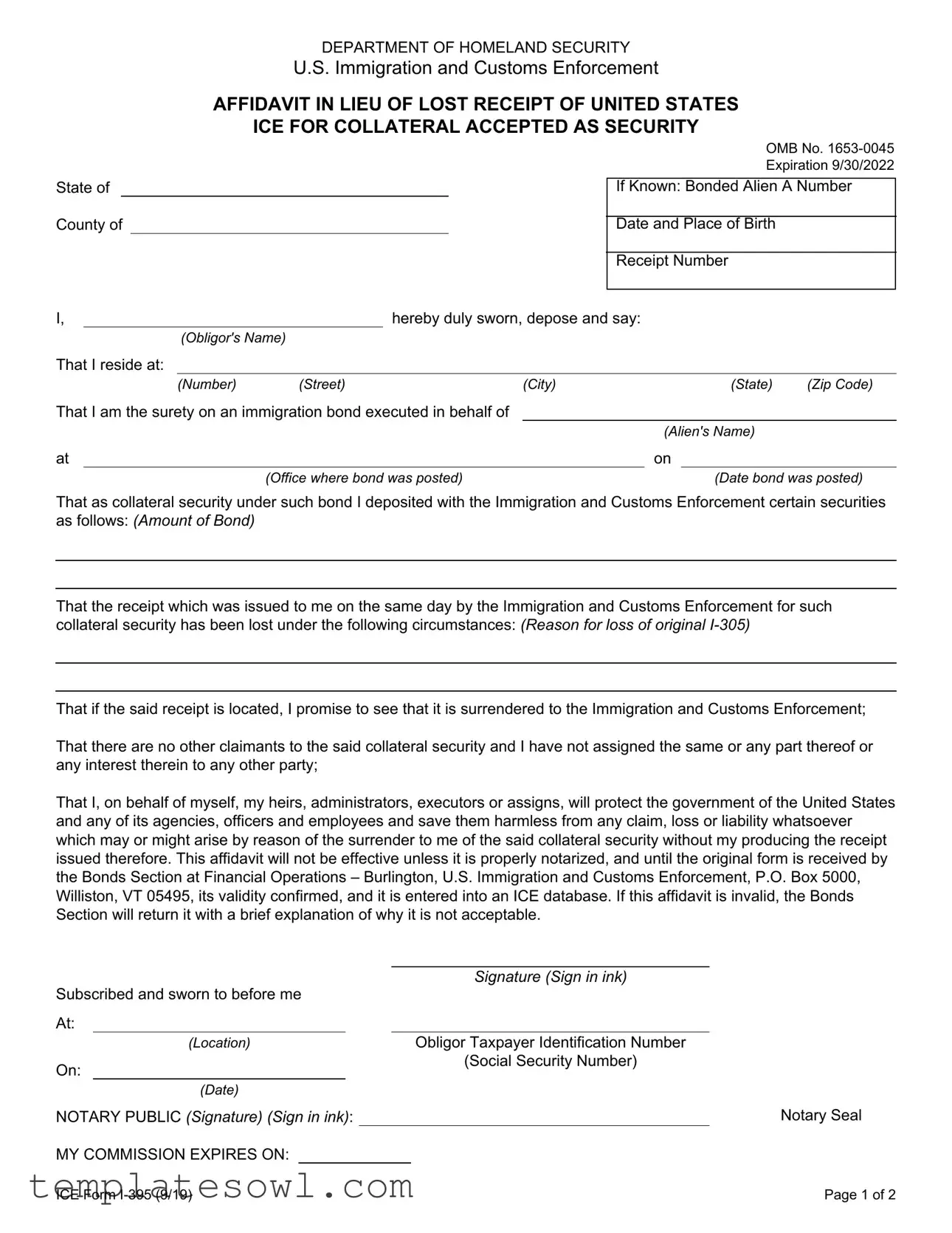What is the I-305 form?
The I-305 form, officially titled "Affidavit in Lieu of Lost Receipt of United States ICE for Collateral Accepted as Security," is a document required when the original receipt for a posted immigration bond has been lost. This form is used by obligors who need to affirm their ownership of the collateral tied to the immigration bond and confirm that they are the rightful claimants to it.
Who should use the I-305 form?
The I-305 form should be used by the obligor, who is the person or entity that pledged collateral as security for an immigration bond. If the original receipt for that bond is lost, the obligor needs to submit the I-305 form to claim back their collateral. It’s crucial that the individual or entity submitting the form is the one who executed the bond on behalf of the bonded alien.
What information do I need to complete the I-305 form?
To successfully complete the I-305 form, you will need the following information: your name and address, the name of the bonded alien, the date and place the bond was posted, the receipt number, the amount of the bond, and the circumstances under which the original receipt was lost. Additionally, you must provide a notarized signature affirming the truth of the information you present.
Why is notarization required for the I-305 form?
Notarization is a crucial requirement for the I-305 form because it adds a layer of verification to your statements. It ensures that the information you provide is sworn to be true before a notary public. This process helps to protect both you and U.S. Immigration and Customs Enforcement (ICE) by preventing fraudulent claims to collateral. Without notarization, the form is not considered valid.
What happens after I submit the I-305 form?
After submission, the Bonds Section at ICE will review your affidavit. They will then confirm its validity and enter it into their database. If your I-305 form is deemed invalid for any reason, ICE will return it along with a brief explanation detailing the issue. It's essential to ensure all information is accurate to avoid delays in processing.
Can I submit the I-305 form without my Social Security number (SSN)?
While submission of your SSN is not mandatory, it is highly recommended. ICE uses your SSN primarily for tax reporting and identity confirmation. If you do not provide it, you may face challenges in reclaiming the bond collateral since the process could take longer and require additional verification methods.
What are the consequences if the I-305 form is invalidated?
If the I-305 form is found to be invalid, you will not be able to reclaim your bond collateral until the issues are resolved. This could lead to delays or complications in your immigration process. Therefore, it’s vital to ensure that all your information is accurate, complete, and properly notarized before submission.

